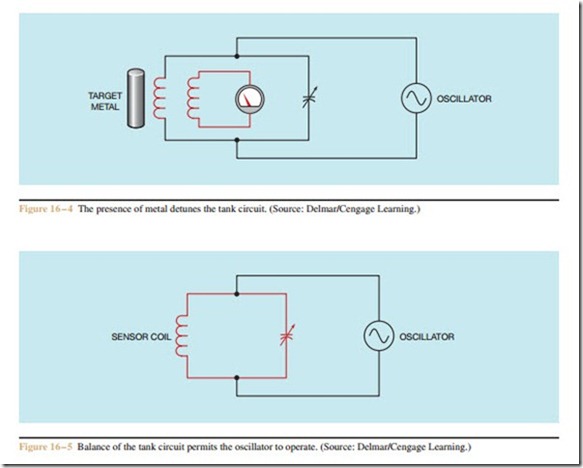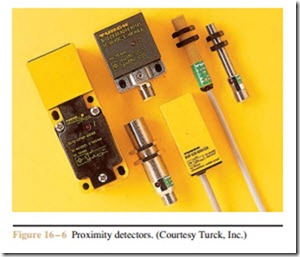Mounting
Some proximity detectors are made as a single unit. Other detectors use a control unit that can be installed in a relay cabinet and a sensor that is mounted at a remote location. Figure 16 – 6 shows different types of proximity detectors. Regardless of the type of detector
used, care and forethought should be used when mount- ing the sensor. The sensor must be near enough to the target metal to provide a strong positive signal, but it should not be so near that there is a possibility of the sensor being hit by the metal object. One advantage of the proximity detector is that no physical contact is necessary between the detector and the metal object for the detector to sense the object.
Sensors should be mounted as far away from other metals as possible. This is especially true for sensors used with units designed to detect all types of metals. In some cases, it may be necessary to mount the sensor unit on a nonmetal surface such as wood or plastic. If proximity detectors are to be used in areas that contain metal shavings or metal dust, an effort should be made to place the sensor in a position that will prevent the shavings or dust from collecting around it. In some installations, it may be necessary to periodically clean the metal shavings or dust away from the sensor.

